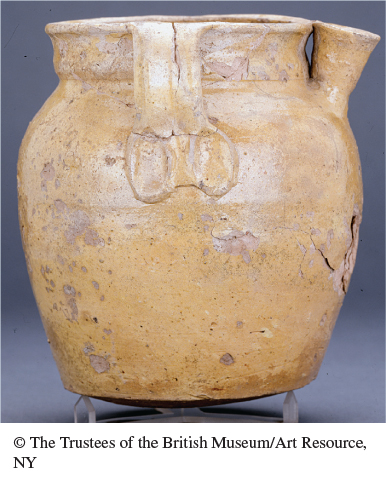A History of Western Society: Printed Page 262
Living in the Past
Life in an English Castle

C astles served nobles as places from which they could oppose royal authority, but they also served kings seeking to build up and maintain their power. Recognizing this value, William the Conqueror and his successors ordered the building of castles at strategic points around England. Edward I, for example, built Harlech Castle on a cliff overlooking the sea on the west coast of Wales as part of his campaign to conquer Wales and destroy the power of the Welsh nobility. The inner buildings of the castle were often built in wood originally, and then in stone, and the towers and outer walls were built in stone as well, all of which required extensive quarrying and hauling, part of the labor obligations of the peasants who lived in the surrounding area.
Castles were built for military purposes, but they were also places of residence. The lord and his family lived in the inner halls and towers, and their servants and supporters often lived there as well. During times of unrest or attack, peasants from nearby villages sometimes moved within the walls, living in the yard in the open or in hastily erected cloth and wood shelters with their animals. No one was very comfortable. Stone walls were cold and damp, and the small windows, designed for security, let in little light, augmented only by torches, oil lamps, and candles. While “medieval banquets” today offer exotic food and sumptuous settings, most meals in a castle such as Harlech — for those in the hall or in the yard — were simple, and were served in ceramic or wooden dishes and pitchers, not elegant plates and silver flagons.


QUESTIONS FOR ANALYSIS
- What strategic value is gained by placing a castle on a hill or cliff? What other features of Harlech Castle increase its military functions? Looking at the photograph of the castle and the floor plan, what features of a castle, other than those mentioned above, do you think might make life difficult for residents?
- The dishes shown here were for everyday use and were quite common, but few have survived. Why might this be? Even more often, medieval dishes were made out of wood, but almost none of these have survived. Why might this be?
- How do these illustrations and objects fit with the view of life in a medieval castle presented in contemporary movies and other media?